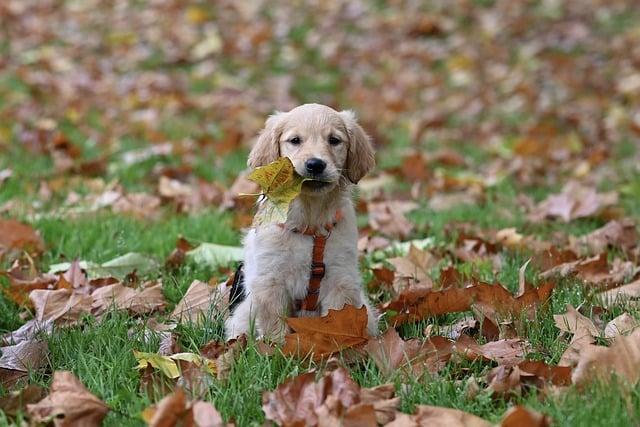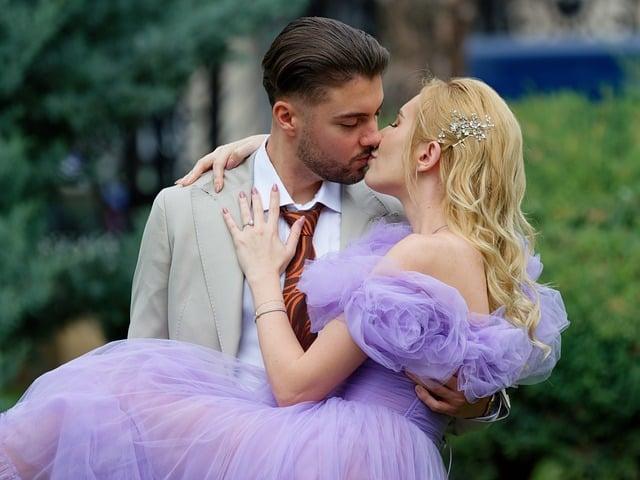Have you ever caught your dog staring at you, those big eyes filled with curiosity and affection? It’s not just a cute quirk; it’s a profound form of communication. When your dog gazes at you, they’re expressing trust and love, seeking connection and understanding. This gaze releases oxytocin, the “love hormone,” strengthening your bond. So, the next time your furry friend locks eyes with you, remember: it’s their way of saying, “I love you.” Embrace that moment; it’s a reminder of the unique relationship you share.
Contents
- Understanding the Emotional Connection Behind Your Dogs Gaze
- Interpreting the Body Language of Your Canine Companion
- Addressing Behavioral Concerns Related to Excessive Staring
- Enhancing Communication and Bonding Through Eye Contact
- Q&A
Understanding the Emotional Connection Behind Your Dogs Gaze
When your dog gazes deeply into your eyes, it’s not just a simple act of looking; it’s a profound expression of their emotional state. This gaze is often a reflection of the bond you share, showcasing trust and affection. Dogs have evolved alongside humans for thousands of years, and their ability to connect with us on an emotional level is a testament to this unique relationship. When your furry friend locks eyes with you, they are communicating their feelings, and understanding this can enhance your bond even further.
Research indicates that prolonged eye contact between dogs and their owners can trigger the release of oxytocin, often referred to as the “love hormone.” This chemical is the same one that fosters bonding between mothers and their infants. When your dog looks at you, they may be seeking comfort, reassurance, or simply expressing their love. This mutual gaze not only strengthens your connection but also contributes to your dog’s overall emotional well-being.
Moreover, the reasons behind your dog’s stare can vary based on context. Consider the following scenarios:
- Seeking Attention: Your dog may be trying to get your attention for playtime or a walk.
- Expressing Needs: A direct gaze might indicate they need something, like food or a bathroom break.
- Showing Affection: A soft, lingering look can be a sign of love and contentment.
Understanding the nuances of your dog’s gaze can help you respond appropriately to their needs and emotions. By recognizing the significance behind their stare, you can foster a deeper connection that enriches both your lives. Pay attention to the context and your dog’s body language; this will allow you to interpret their feelings more accurately and respond in a way that strengthens your bond.
Interpreting the Body Language of Your Canine Companion
Understanding your dog’s gaze can unlock a treasure trove of insights into their emotions and intentions. When your canine companion stares at you, it’s not merely a passive act; it’s a form of communication that can convey a range of feelings. This intense eye contact can indicate affection, as dogs often look to their owners for reassurance and connection. When they fix their gaze on you, it’s a way of saying, “I trust you,” and “I feel safe with you.”
However, the context of the stare is crucial. A dog may also maintain eye contact when they are seeking something, such as food or playtime. This behavior is often accompanied by other signals, such as a wagging tail or a playful stance. In these moments, your dog is not just looking; they are actively engaging with you, hoping to elicit a response. Recognizing these cues can enhance your bond and improve your interactions.
On the flip side, prolonged staring can sometimes indicate discomfort or anxiety. If your dog’s body is tense, ears are pinned back, or they are avoiding other stimuli, their gaze may be a sign of stress. It’s essential to observe their overall body language to interpret their feelings accurately. In such cases, redirecting their focus or providing a calming environment can help alleviate their unease.
Lastly, consider the power of mutual gaze. Studies have shown that when dogs and their owners look into each other’s eyes, it can increase levels of oxytocin, the “love hormone,” in both parties. This shared moment of connection not only strengthens your relationship but also enhances your dog’s emotional well-being. So, the next time your dog stares at you, take a moment to appreciate the bond you share and the silent language that speaks volumes.
Addressing Behavioral Concerns Related to Excessive Staring
Excessive staring in dogs can sometimes be a source of concern for pet owners. While it may seem harmless, it can indicate underlying behavioral issues that need to be addressed. Understanding the reasons behind this behavior is crucial for fostering a healthy relationship between you and your furry friend. Here are some potential causes and solutions to consider:
- Anxiety or Stress: Dogs may stare excessively when they are feeling anxious or stressed. This could be triggered by changes in their environment, loud noises, or even the presence of unfamiliar people or animals. To help alleviate this anxiety, create a safe space for your dog, use calming aids, or consult a professional trainer for guidance.
- Attention-Seeking Behavior: If your dog has learned that staring at you results in attention, whether positive or negative, they may engage in this behavior more frequently. To modify this, ensure you are providing adequate mental and physical stimulation through playtime, training, and interactive toys, reducing the need for them to seek attention through staring.
- Medical Issues: In some cases, excessive staring can be a sign of medical problems, such as vision issues or neurological disorders. If you notice other concerning symptoms, such as changes in behavior, appetite, or energy levels, it’s essential to consult your veterinarian for a thorough examination.
- Communication: Dogs often use eye contact as a form of communication. If your dog is staring at you, they may be trying to convey a message, such as hunger, the need to go outside, or simply a desire for companionship. Pay attention to their body language and other cues to better understand what they are trying to communicate.
By recognizing the potential reasons behind your dog’s excessive staring, you can take proactive steps to address any behavioral concerns. Implementing training techniques, providing a stable environment, and ensuring your dog’s health can significantly improve their well-being and your relationship. Remember, understanding your dog’s needs is key to fostering a harmonious bond.
Enhancing Communication and Bonding Through Eye Contact
When your dog gazes into your eyes, it’s more than just a simple stare; it’s a profound form of communication that fosters a deeper connection between you and your furry friend. This eye contact is not merely a sign of affection; it serves as a bridge that enhances understanding and strengthens the bond you share. Dogs have evolved alongside humans, and their ability to connect through eye contact is a testament to their loyalty and emotional intelligence.
Research indicates that when dogs look into their owners’ eyes, both parties experience a release of oxytocin, often referred to as the “love hormone.” This biochemical reaction not only promotes feelings of love and attachment but also encourages trust and security. By maintaining eye contact, your dog is signaling that they feel safe and comfortable in your presence, which is essential for a healthy relationship. This mutual gaze can lead to a more harmonious living environment, where both you and your dog feel understood and valued.
Moreover, eye contact can significantly enhance communication between you and your pet. Dogs are adept at reading human emotions, and by looking into their eyes, you can convey a range of feelings and intentions. This non-verbal communication can help in various situations, such as during training sessions or when trying to calm an anxious dog. By establishing a habit of making eye contact, you can improve your dog’s responsiveness to commands and cues, making interactions more effective and enjoyable.
Encouraging your dog to engage in eye contact can be a rewarding practice. You can foster this behavior through positive reinforcement techniques, such as treats or praise when your dog looks at you. Over time, this will not only enhance your communication but also deepen the emotional bond you share. Remember, every moment spent gazing into each other’s eyes is an opportunity to strengthen your relationship, making your connection with your dog even more special.
Q&A
-
Why does my dog stare at me?
Dogs often stare at their owners as a way to communicate. This behavior can indicate affection, curiosity, or a desire for attention. When your dog looks at you, they may be seeking reassurance or simply enjoying your company.
-
Is my dog trying to tell me something?
Yes, your dog may be trying to convey a message. Staring can be a sign that they want to play, go for a walk, or need something, such as food or water. Pay attention to their body language and the context to better understand their needs.
-
Does staring indicate a problem?
In most cases, staring is a normal behavior. However, if your dog stares intensely without breaking eye contact, it could be a sign of anxiety or aggression. If you notice any concerning behaviors, consult a veterinarian or a professional dog trainer for guidance.
-
How can I respond to my dog’s staring?
Responding positively to your dog’s stare can strengthen your bond. Acknowledge their gaze with a gentle touch, a smile, or verbal praise. This encourages healthy communication and reinforces the trust between you and your furry friend.
your dog’s gaze is more than just a look; it’s a profound connection. Understanding this behavior can deepen your bond and enhance communication. Embrace those moments of eye contact—they’re a testament to your unique relationship.




